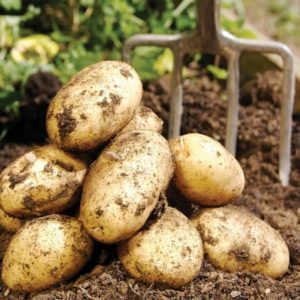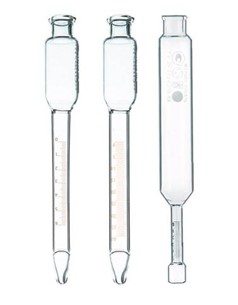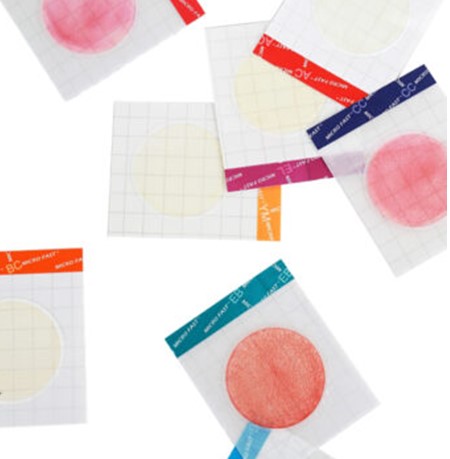Sociologists have described how “normal” differs from “livable” for Russians
Scientists from the National Research University Higher School of Economics, based on surveys of respondents, have compiled four consumer standards for Russians — from the most comfortable, where people can afford any purchases, to the extremely limited, characterizing the “edge of survival.” The results of the study were published in an article by employees of the Center for Analysis of Income and Living Standards at the National Research University Higher School of Economics, Alina Pishnyak, Natalia Khalina, and Elena Nazarbayeva, in the latest issue of the journal “Economic Sociology” (RBK has reviewed them).
Based on work with focus groups, the authors identified the following consumption standards:
- “comfort” (implies great opportunities in all areas of consumption and a certain elitism);
- "norm" (wide range of possibilities and sufficient variety, but without excesses);
- “you can live” (there are restrictions, refusal of a number of goods and services that are available to many);
- "very difficult" (corresponds to a situation on the brink of survival).
The standards describe respondents' ideas about what and in what quantities goods and services ( food , clothing and footwear, cars, housing, medicine, etc., 11 categories in total) different groups of the country's residents can afford. The authors note that consumer standards in the population's minds are differentiated from income opportunities and that the shift from one standard to another occurs when income changes. At the same time, respondents set a fairly high bar for the "norm" standard and describe the "livable" standard rather primitively.
“The following picture emerges: the population is oriented towards a very good life, but demonstrates that the limit of what is acceptable is quite far from normal,” they state.
According to Rosstat data for the fourth quarter of 2024 (the most current estimate), the richest 10% of Russians account for 31% of the total monetary income of the population, and the average per capita income in this group is 240.5 thousand rubles per month. At the same time, the poorest 10% of citizens have only 1.9% of the total income with monthly average per capita income at the level of 14.5 thousand rubles.
How the study was conducted
The material was collected during online work with 50 focus groups in June-July 2023. There were separate discussions with residents of various geographical points of RUSSIA ( Moscow , Yekaterinburg, Yaroslavl, a mixed group of residents of other cities with a population of 250 thousand to 1 million people), as well as with representatives of different age groups. The selection took into account the level of education and income (low, medium and high). Men and women, respondents with and without children, people with different attitudes regarding the current socio-economic and political situation were invited to participate.
The concept of "consumer standards" in the article implies the ideas that have formed in the public consciousness about the availability of different packages of opportunities and everyday practices among different groups of Russians. The authors clarify that this is not about a minimum or sufficient level for the whole of society, but about certain "ideal types", that is, about what is considered to correspond to higher or lower levels of consumption, as well as what is perceived as the norm.
What does the "comfort" standard consumption look like?Consumers of the “comfort” standard, as understood by respondents, can afford a large amount of high-quality MEAT and fish, off-season and exotic fruits and berries , delicacies, high-quality and expensiveALCOHOL , daily trips to lunch from the office to a restaurant or cafe, as well as going out to a restaurant "for no reason" from time to time. Their purchases are not price-oriented and are mainly made in premium supermarkets. Representatives of this category do not need to plan expenses for clothes and shoes in advance, adapt to sales and promotions - the wardrobe can be updated whenever you want, there is an opportunity to order custom tailoring, go on shopping tours, use the services of buyers and stylists.
Updating household appliances and electronics in the "comfort" standard is not a big burden on the family budget and, as a rule, does not require advance savings. Equipment is bought "from salary", and not in installments and not under consumer credit programs. Russians from this category, as a rule, use a "smart home" system, a robot vacuum cleaner, an air conditioner, a clothes dryer, in addition, each family member, including children, has their own computers, laptops, tablets. A family can have several cars, and these are new cars of European and Japanese brands or used cars, but of the highest class.
The "comfort" standard is characterized by the presence of several apartments or an apartment and a country house, including housing "for the future" - for a child, which is rented out. The housing is located in a premium-class residential complex or cottage village, has a large area, spacious premises, separate rooms for all family members and a separate living room. The apartment may well be mortgaged or rented, but the mortgage should not affect the family's usual way of life and can be repaid within 5-10 years, and renting still requires having your own home or significant savings.
What are the characteristics of “normal” consumption?
The authors describe food consumption in the “norm” standard as follows: “we buy everything, but without excesses.” The diet includes fairly high-quality proteins — mainly white meat andfish , dairy products, nuts, lots of fruit and vegetables, but mostly seasonal. Delicacies and more expensive favorite foods (such as berries or cakes) are consumed from time to time, and not only on holidays. Alcohol in this standard is not the cheapest and is bought based on the price -quality ratio, often "in reserve at good prices." Products are purchased mainly in mid-range chain supermarkets and farm shops, while the choice is not too focused on price and savings and allows for spontaneous purchases. Consumers of this standard can order food home delivery two or three times a month, go to restaurants and cafes on weekends, and take coffee to go on weekdays.
In the "norm", consumers can afford a fairly large selection of high-quality clothing and footwear in the mid-price segment with some "reasonable" savings. "Chasing discounts is not mandatory, but much simpler brands will be purchased at full price than in the case of the "comfort" standard," the authors note. This standard is characterized by a wardrobe that is updated regularly (at least once a season), families have the opportunity to buy winter footwear and outerwear. it is possible that there will be "status" brands in the wardrobe, which are carefully worn and, possibly, resold later.
Household appliances and gadgets in the "norm" standard can be purchased using installments and loans, but this will not be extremely burdensome for the family budget. At your disposal is a basic set of equipment of mid-range brands, not the latest models, but still modern and high-quality. There may also be products for additional convenience, such as a robot vacuum cleaner, but, unlike "comfort", cheap Chinese brands. Personal computers and laptops can only be owned by adult family members or older children.
This standard is characterized by having one mid-range or economy class car or a heavily used premium car. But maintaining a car for a family is not an easy task, the researchers point out. The housing standard for the "norm" is one's own home with a common room for spouses and separate bedrooms for children of different sexes, "quite modern and comfortable, with a neat renovation, located in a relatively new building." Having a summer house is not excluded. The housing is "very likely" to be mortgaged, the payment for which "is a significant budget item, but allows one to live normally and not give up vacations and entertainment."
What is the difference between "livable" and "very difficult"
The “livable” and “very hard” standards of nutrition are characterized by a rather monotonous and limited diet. The diet of consumers of the “livable” standard is dominated by cereals, potatoes , canned goods and bakery products, there is “harmful and cheap” food like instant noodles, animal protein is represented mainly by frozen meat and semi-finished products. Seasonal fruits and vegetables are not bought often, there are almost no delicacies even on the holiday table, there is alcohol, but of “average quality” ( wine , vodka). When choosing products, consumers are guided by promotions, make stocks for future use if the product is sold at a big discount. Delivery of ready-made food is almost excluded, going out with the family is only to fast food establishments.
In the "very difficult" standard, people buy inexpensive, high-calorie products (pasta, potatoes, bread, eggs , cereals). They cannot afford fish, vegetables, fruits, chocolate. "Everything is purchased only on promotions, moreover, sometimes expired products are consumed. At the same time, the basket includes alcohol, albeit the cheapest. There is no opportunity to pamper the family even occasionally, the diet is very meager and monotonous," the article says. There is no talk of delivery of ready-made food and visiting any catering options (unless these are social canteens).
The wardrobe in the "livable" standard is described by a small basic set of cheap clothes and low-quality shoes, for each season there is one item of outerwear and one pair of shoes, which are updated as needed. Things are bought mainly at clothing markets, in small stores with Chinese clothes, tents in underpasses and second-hand. Buying household appliances and electronics is difficult and requires a significant revision of the family budget, strict savings. The set of basic items is approximately the same as in the "norm" standard, but their average age is significantly higher (7-10 years), the functionality is very modest, and the manufacturers are of a lower level.
The option to buy a new car or to have it seriously repaired is absent in this standard, but families most likely have a car, an old one, bought with mileage. The housing is cramped and outdated, all family members do not have a separate room, several generations may live in one apartment. "There are no prospects for improving the living conditions of representatives of this segment. It is likely that they will have a summer house, but it will be old and uncomfortable," the article notes.
Consumers of the "very difficult" standard practically do not buy clothes and shoes, their possibilities are determined by what they get from other people, charities, religious organizations or social support services. They do not have the opportunity not only to buy new equipment, but also to pay for its repair, they may not have individual items of even the most basic set (for example, a washing machine), and those they have are likely to be very old. Also, this standard does not assume that the family has a car.
Housing in this standard is characterized by dilapidation, cramped conditions and lack of personal space. Repairs are not available, there is no possibility to improve living conditions, and a mortgage is out of the question.
What serves as a marker of a decline in standards
Sociologists also described markers of a decline in the standard of living, indicating in the respondents' understanding of a transition to a lower consumer standard. Thus, the "comfort" standard is largely formed by "pre-pandemic mythologemes" and is characterized by maximum diversity in all categories, freedom and spontaneity of choice, the ability to receive personalized products and services, including "getting what is sanctioned." Markers of going beyond the lower limit of this standard are restrictions on freedom of movement and opportunities to travel around the world, problems with obtaining paid but high-quality medical care and the best medicines, the inability to provide children with good tutors and quality higher education in top universities, to buy a new car that is not inferior to the existing one in class and brand category.
The "norm" standard combines attempts to maintain consumer habits formed before the pandemic and adapt to the current situation, trying to replace familiar goods and services with alternatives. The emergence of debts (including mortgages), the inability to go on vacation abroad, and a complete transition to free medical and educational services indicate that the lower limit of the "norm" has been crossed.
The "livable" standard is associated with constant anxiety about the financial well-being of the family; it involves minimizing all expenditure items, including basic needs, and losing the ability to plan long-term. Markers of crossing the lower limit of the standard are debt and living on credit, low quality of food, poor nutrition, lack of strength and opportunities for simple leisure, vacation, inaccessibility of even the cheapest clubs for children and the most basic paid dentistry.
The authors describe the “very difficult” standard as “a bad, disastrous life, when consumption is reduced to satisfying basic needs.” “This is the standard of survival, the struggle to overcome which was underway in Russia in the 1990s. But even this standard has a lower limit — homeless life and extreme poverty, that is, the transition to the most deprived and asocial strata,” the article emphasizes.
According to the latest data from Rosstat, the share of citizens in Russia who have great difficulty “making ends meet” has decreased: if in 2022 there were 9.3% of them, then in 2024 it was 5.8%. The poverty level is also decreasing - the share of Russians with incomes below the poverty line in 2024 was 7.2%, becoming the lowest in the modern history of the Russian Federation.
How other sociologists evaluate the findingsIf we do not overestimate the potential of the ideal-typical approach, then we should certainly agree with the conclusions of the study, notes Stepan Lvov, DIRECTOR of Strategic Development at VTsIOM. "The hypothesis that there is quite a large distance between the "norm" and the "strength limits" has been actively circulating among researchers since the 1990s. All the more valuable is the attempt by colleagues to test this hypothesis in modern conditions," Lvov believes.
The “comfort” standard turned out to be “somewhat imaginary,” and the lowest-income standard was downright crude and primitive, says Vladimir Kartavtsev, a sociologist and vice-rector for science at the Moscow Higher School of Social and Economic Sciences (Shaninka). “This may indicate that the focus groups did not include truly poor respondents who could have clarified and nuanced it, as well as the general lack of widespread accurate ideas about a poor life from a financial point of view in the mass consciousness,” argues Kartavtsev.
The gap between the “acceptable limit” of consumer well-being and “normality” confirms the well-described fact of economic inequality, which in Russian society has extremely serious indicators, states the Vice-Rector of Shaninka.
The increase in income inequality is evidenced, in particular, by Rosstat data: the Gini coefficient, an indicator that shows the uneven distribution of income among the population, increased to 40.8% by the end of 2024, compared to 40.5% in 2023. The statistical service data also indicate that the incomes of the poorest groups are growing more slowly than the incomes of the richest.
What role does psychology play?The classification proposed by the HSE researchers has a right to exist, believes Boris Kopeikin, chief economist at the Stolypin Institute for Growth Economics. However, as with the concept of the middle class, the definitions of “comfort,” “norm,” etc. can differ significantly and lead to different conclusions, especially considering that the study talks about consumption standards as an idea of possibilities and is based on surveys, not on statistical data on actual consumption, the expert warns.
The standards identified in the course of the study can be supported not only by the objective level of income, but also by psychological mechanisms, says Timofey Nestik, HEAD of the laboratory of social and economic psychology at the Institute of Psychology of the Russian Academy of Sciences. For example, by protecting the established economic identity (someone is used to considering themselves middle class and continues to think so when their income decreases, relying on other criteria), comparing themselves with those who are doing worse, and not with those who are living better, as well as using symbolic coping (for example, considering the change in their family's opportunities as temporary, by analogy with other crises that they managed to successfully overcome before), the expert notes.
The standards described in the study may have already changed, Lvov does not rule out. "The presented study was conducted in 2023. And we survived 2024, a difficult year in terms of income and consumption, and entered 2025, which is no less difficult. This period may have given rise to other habits and mythologemes, among which the mentioned sanctions and online practices may not be the most significant," the expert explains.
For example, in the category “cars” it is said that there are cars of European or Japanese manufacture, which have not been officially supplied to the Russian market for several years and are presented only as part of parallel imports, Kopeikin points out.
Events that are commonly perceived as “landmarks,” such as the covid-19 pandemic , may not have any impact on either images of prosperity or real consumption practices, Kartavtsev argues. “And in the case of the Russian context, this may be due precisely to the fact that everyday economic life takes place outside of normative definitions, which is labeled in scientific discourse as a gray zone,” he summarizes.




























































